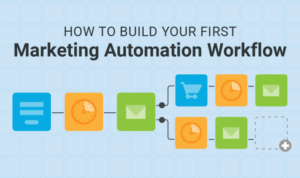Using Micro-Influencers in Marketing sets the stage for leveraging authentic connections with niche audiences, exploring the power of strategic partnerships in the digital landscape.
Dive into the world of micro-influencers and discover how these dynamic individuals can revolutionize your marketing approach.
Importance of Using Micro-Influencers in Marketing
Micro-influencers have become a powerful tool in marketing strategies, offering unique benefits compared to macro-influencers. These individuals, with a smaller yet highly engaged following, can help brands reach niche audiences effectively.
Benefits of Utilizing Micro-Influencers
- Authenticity: Micro-influencers are often seen as more authentic and relatable to their followers, leading to higher engagement rates and trust.
- Cost-Effective: Working with micro-influencers is usually more budget-friendly than partnering with macro-influencers, making it ideal for smaller brands.
- Niche Audiences: Micro-influencers have a more specific and targeted audience, allowing brands to reach the exact demographic they are aiming for.
Successful Marketing Campaigns by Micro-Influencers
- Daniel Wellington: The watch brand collaborated with numerous micro-influencers on Instagram, leading to a significant increase in brand awareness and sales.
- Huda Beauty: The cosmetic brand worked with beauty micro-influencers to promote their products, resulting in a boost in sales and social media engagement.
Finding the Right Micro-Influencers

To effectively leverage micro-influencers in your marketing strategy, it is crucial to identify the right individuals who align with your brand values and resonate with your target audience. Finding the perfect micro-influencers can significantly impact the success of your campaigns.
Strategies for Identifying Micro-Influencers
- Utilize social media listening tools to identify individuals who are already talking about topics related to your brand.
- Look for micro-influencers who have a niche focus or expertise that aligns with your brand’s offerings.
- Engage with your own followers and customers to see who they are following and engaging with on social media.
Importance of Engagement Rates
When selecting micro-influencers, it is essential to prioritize engagement rates over follower count. High engagement indicates a more active and involved audience, leading to better results for your campaigns.
Evaluating Authenticity and Alignment
It is crucial to evaluate the authenticity and alignment of micro-influencers with your brand values to ensure a genuine connection with your target audience. Consider factors such as the type of content they post, their interaction with followers, and how well their personal brand aligns with yours.
Building Relationships with Micro-Influencers
Building strong relationships with micro-influencers is crucial for the success of influencer marketing campaigns. These partnerships are built on trust, authenticity, and mutual respect, allowing brands to reach their target audience effectively. Here are some tips on how to engage and collaborate with micro-influencers successfully:
Engagement Strategies
- Personalized Communication: Take the time to understand the micro-influencer’s content style and audience before reaching out. Personalized messages show that you value their work and are genuinely interested in collaborating.
- Offer Value: Provide micro-influencers with creative freedom and opportunities to showcase their unique voice. This can lead to more authentic content that resonates with their followers.
- Build Relationships Over Time: Invest in long-term relationships with micro-influencers instead of one-off collaborations. This can help in creating a loyal brand advocate who genuinely believes in your product or service.
Trust and Transparency
- Set Clear Expectations: Clearly Artikel the campaign objectives, deliverables, and compensation terms from the beginning to avoid misunderstandings later on. Transparency is key to building trust.
- Encourage Honest Feedback: Allow micro-influencers to provide feedback on the collaboration process and listen to their suggestions for improvement. This open communication fosters trust and strengthens the partnership.
- Acknowledge Their Impact: Recognize and appreciate the contributions of micro-influencers to your brand. Celebrate their successes and milestones to show that you value their partnership.
Measuring the Success of Micro-Influencer Campaigns: Using Micro-Influencers In Marketing

When it comes to evaluating the impact of micro-influencer marketing campaigns, it’s essential to identify key performance indicators (KPIs) that can help measure success. These KPIs can vary depending on the goals of the campaign, but some common ones include engagement rates, conversion rates, reach, and brand sentiment.
Key Performance Indicators for Micro-Influencer Campaigns
- Engagement Rates: This includes likes, comments, shares, and overall interaction with the content created by micro-influencers. Higher engagement rates usually indicate a more successful campaign.
- Conversion Rates: Tracking the number of conversions, such as sales or sign-ups, directly attributed to the micro-influencer campaign can help determine its effectiveness in driving action.
- Reach: The number of people who were exposed to the content through the micro-influencer can give insights into the campaign’s visibility and potential impact.
- Brand Sentiment: Monitoring how the audience perceives the brand after the collaboration can indicate whether the campaign was able to positively influence brand perception.
Tracking ROI of Micro-Influencer Collaborations
One effective method for tracking the ROI of micro-influencer collaborations is through affiliate links or unique discount codes provided by the influencers. This allows brands to directly attribute sales or conversions to the specific influencer’s efforts.
Examples of Metrics for Measuring Campaign Effectiveness, Using Micro-Influencers in Marketing
- Click-Through Rate (CTR): The percentage of people who click on a link in the influencer’s content to visit the brand’s website.
- Return on Investment (ROI): Calculating the revenue generated from the campaign compared to the cost of collaborating with the micro-influencer.
- Social Media Mentions: Monitoring the increase in brand mentions on social media platforms after the campaign can indicate the level of brand awareness generated.





